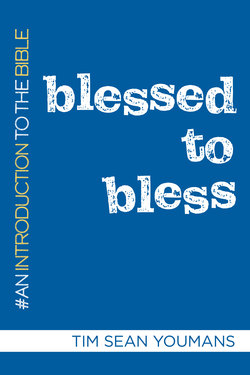Читать книгу Blessed to Bless - Tim Sean Youmans - Страница 14
На сайте Литреса книга снята с продажи.
Оглавление4
The Consequences of Sin
Symbolism. A symbol has two or more levels of meaning. One, it is the thing that it actually is, but it also conveys some other meaning. Religious culture tends to have a variety of symbols. The book of Genesis, especially the first eleven chapters, has quite a few:
• soil: represents humanity
• apple (or fruit): represents the knowledge of good and evil, and sometimes temptation
• snake: represents a dangerous temptation that can hurt you
• garden: represents a perfect world or Utopia
As you read Genesis 3 about the “fall of humanity,” notice that when God is going to address these consequences, the literary structure changes to poetry. Poetry is highly figurative and full of symbolism. Often people will conclude that means it is “not true.” That could be the case with figurative language, but not always. Poetic language can also mean it is more concentrated or more important than narrative (storytelling) forms. It is one way of saying, “Pay attention, this has particular meaning.”
There is a poetic inset in Genesis 3:14–19 laying out the consequences of Adam and Eve’s disobedience to God. Keep in mind that these things are not the Creator’s intention for them:
• Snake. Will now crawl on its belly and there will be hatred between it and the woman and her offspring. One of her offspring will crush the serpent’s head, and the serpent will strike his heel.
• Woman. She will have pain in childbearing and her desire will be focused on her husband and he will rule over her. Again, keep in mind this is not the relationship God intended but the broken version. This suggests that equality between spouses was God’s original intention.
• Man. Work will now be hard. Notice the parallel. The poetic language emphasizes that the ground will become cursed and will not cooperate with the man. Remember, what did God use to make Adam? What was his essence? It was soil. Is this a play on words? Did Adam’s disobedience place him at war with aspects of himself?
Her offspring will crush your head and the serpent will strike his heel. Christians believe this to be a foreshadowing of the death of Jesus (the serpent will strike his heel) and Jesus’ victory over that death in the resurrection (her offspring will crush your head).
God banishes Adam and Even from the Garden and places cherubim at the gate with flaming, flashing swords to keep them out. There are basically three kinds of celestial creatures described in the scriptures. The first type are called malakim, which means messenger, and are often referred to as angels. They appear in human form with some unmentioned aspect giving those around them a clue that they are celestial beings. (Sorry to disappoint you, but they never have wings.) Another type are cherub (singular) or cherubim (plural). They are a hybrid human/animal with wings. A third type are seraphim, which show up in various forms but generally are luminous serpent-like creatures with wings. Cherubim and seraphim are most associated with the worship of God.
Your next reading is Genesis 4. In the next few entries we will work through some of the modern concerns about these stories. Are they literal or figurative? Can they be both? Was the earth created 5,775 years ago or 4.5 billion years ago? Keep those questions in mind as you read the passages.
Questions for Reflection or Discussion
1. Some think that men ruling over their wives is the way God wants marriages to be. What do you think?
2. Most people are freaked out by snakes. Do you have any snake stories?
3. The punishment is set in a poetic form. Why do you think the writers presented it that way?
